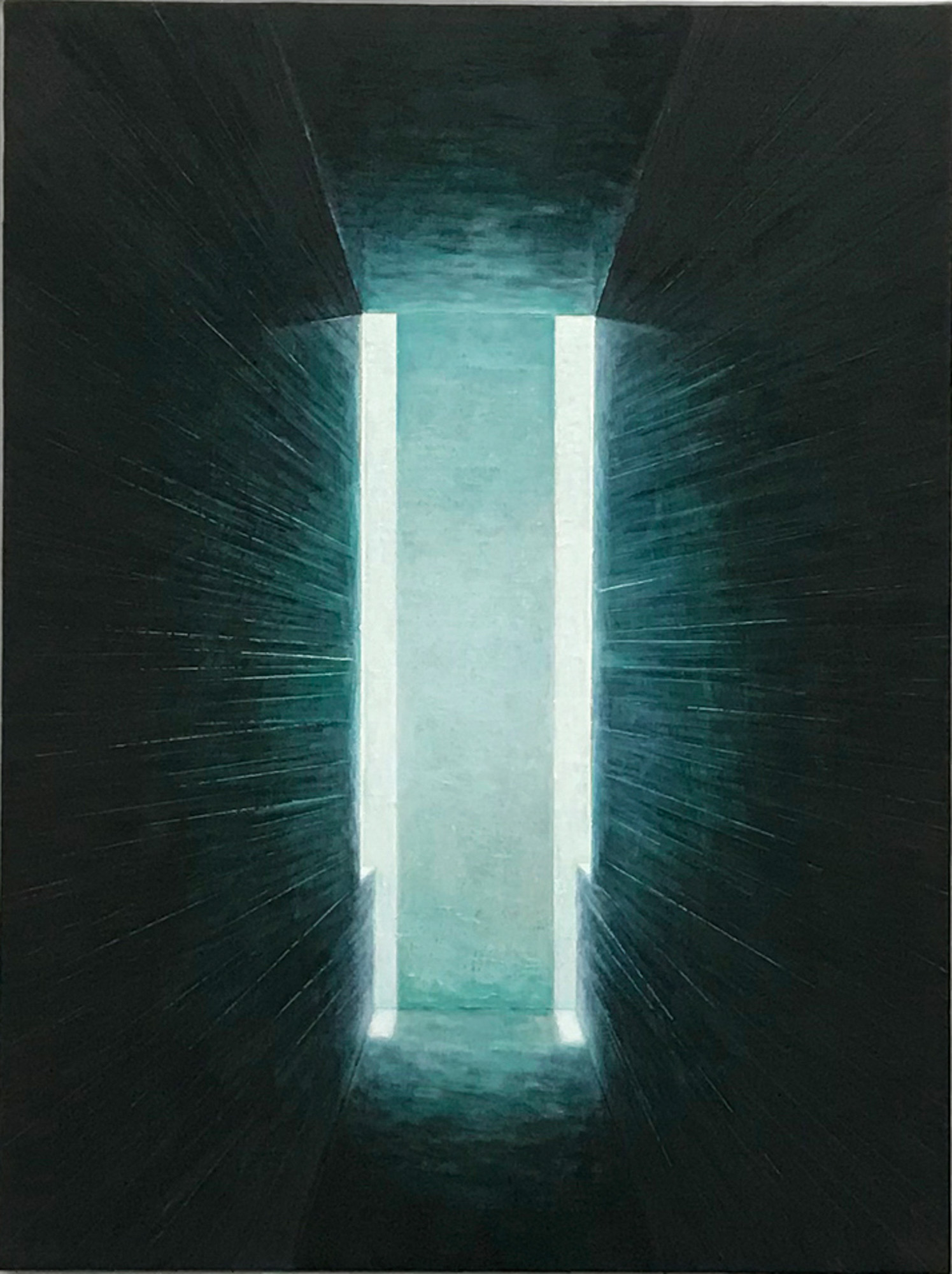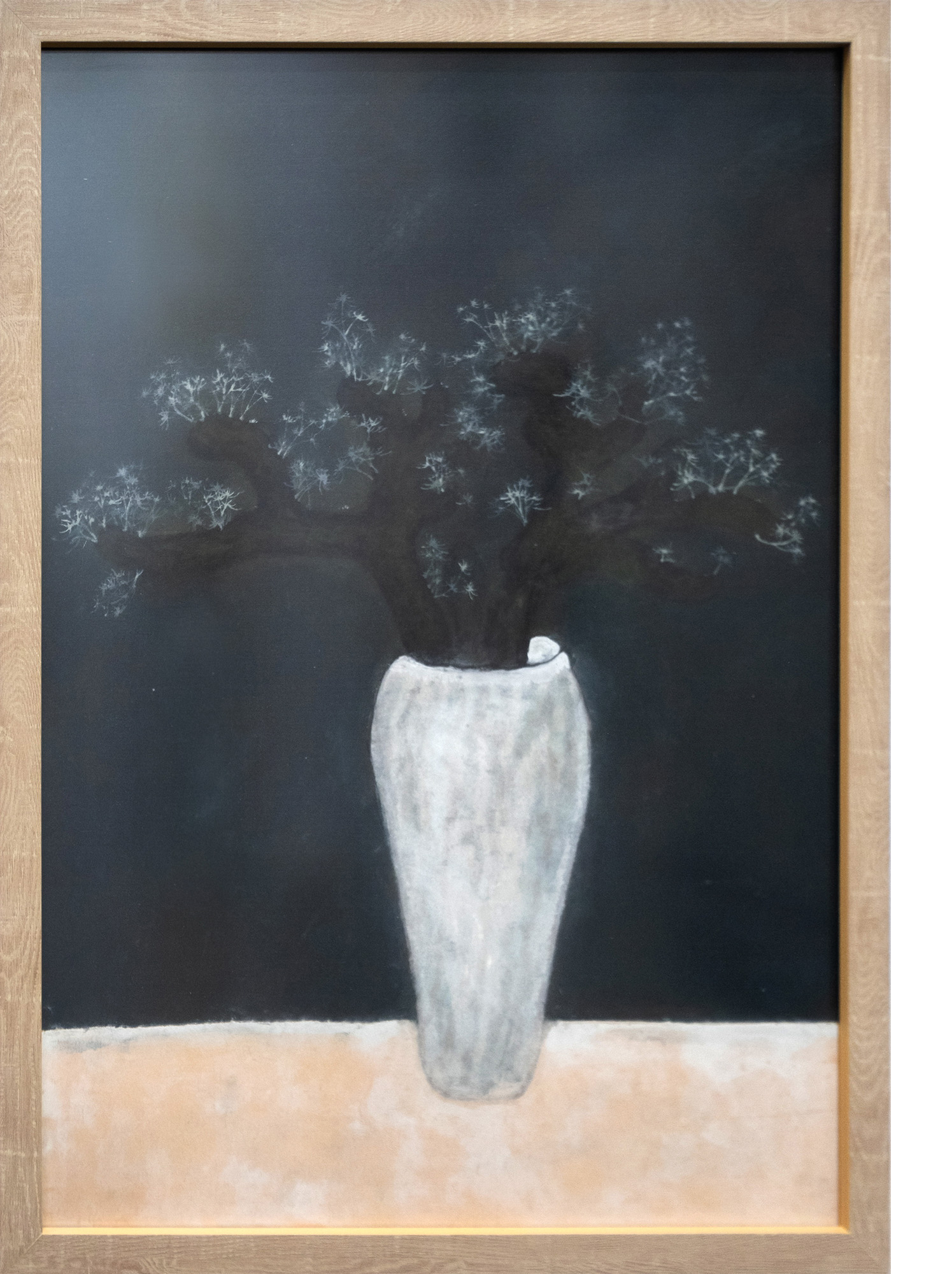Shows
Grasping the Elusive “Shining Moment”


Curated by architect, collector, and artist William Lim, the group exhibition “Shining Moment” placed an emphasis on the theme of light. However, defined loosely in the exhibition’s introduction as the “origin of vision,” which “brings along shadow and space,” light simply united all 30 works in the show by their visual media, and proved to be less than illuminating as a curatorial concept. Still, the arrangement of the exhibition at Tang Art Foundation did lend itself to some meaningful cohesion. Featuring artworks from 11 Hong Kong artists, the three rooms—titled “Yesterday,” “Today,” and “Tomorrow”—explored how we long for the past, experience the present, and imagine the future.
Visitors were greeted by Chan Wai Lap’s The Papers (2017), the centerpiece of the “Yesterday Room.” The drawing installation comprises recreations of old receipts, carefully arranged in a long glass cabinet like artifacts in a museum. The handmade quality of the receipts—records of Chan’s everyday life—are betrayed by the shaky lines mimicking printed text, suggesting the impossibility of recreating a bygone moment despite a desire to preserve and relive it. Nearby, Wong Sze Wai captures the tainting of the past by the enduring forces of weather and time in Playground II (2019), a painted triptych of an abandoned amusement park. Mimicking the effects of rain, streaks of color run down the canvases, obfuscating what was once a place of joy.
Wong Chun Hei’s series The Study of the Sky Everyday (24/6/2017 – 23/6/2018) (2017–18) introduced the audience to the “Today Room.” Small, acrylic paintings capturing the sky on different days lined the walls in chronological order. Each piece is labeled with the time and location of its creation, and evidences the artist’s attempt at capturing a specific moment. When strung together, the fragments lead the present into the past. Instead of trying to depict the present as it is, Stanley Shum points to how we can perceive the now in extreme clarity but also in selective focus, in his oil painting Supernova (2021). The explosive scene features a building with clear-cut shapes, reflecting a sharpness in awareness that is only available in the present moment. However, the edifice is surrounded by a chaos of contrasting, bright colors; vibrant patterns; and squiggly lines that represents a tangle of unprocessed information.


Our views of the future, the focus of the “Tomorrow Room,” can be even less clear. Frank Tang’s installation Daydreaming by Sea of Japan (2017) projects videos of the sky on a paneled curtain. Inked with traditional Chinese motifs, the silk curtain opens and closes at timed intervals, often corresponding to the changing colors of the sky. As blue daylight shifts into a yellow sunset, the audience is reminded of the inevitable and cyclical passage of time. The curtain opens with a promise of a beginning, inviting the viewers to step into an uncertain future. For some, this future can seem like the light at the end of the tunnel, as is rendered in Szelit Cheung’s oil painting series Hikari (2021). For others, it is a less optimistic scene of a wire fence among burning hills, as is portrayed in Argus Fong’s painting Sand (2016–18). Or, the future can be marked by one’s aspirations, as Wong Shun Yu describes in his ink-work titles I want to waste my time with you (2019) and Later, later on, I only want to be a normal man, keep a cat, have a small house, and a plant (2019).
The theme of time was clearly teased out in the exhibition, though the curatorial statement only focused on light. The unfortunate misalignment between the curatorial emphasis and the content confused, though did not completely obscure, a cohesive show that stirred reflections on the slippery past, present, and future.
“The Shining Moment” was on view at Tang Art Foundation, Hong Kong, from May 15 to July 17, 2021.







